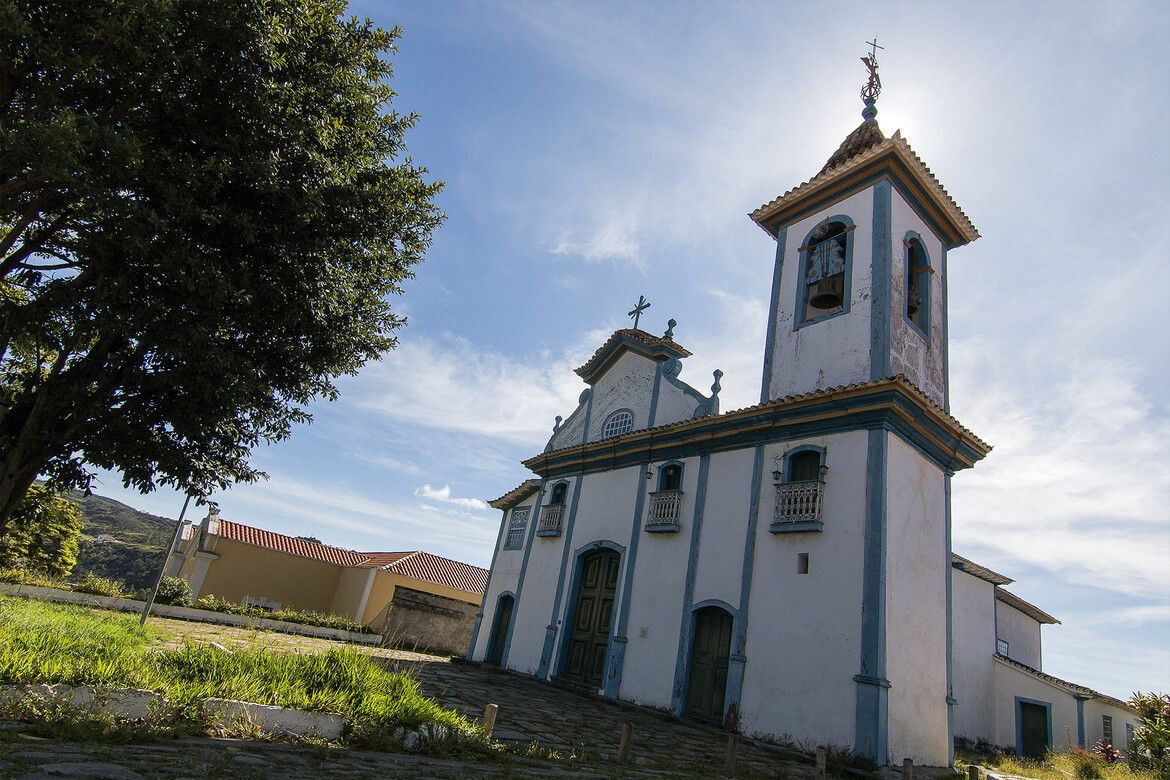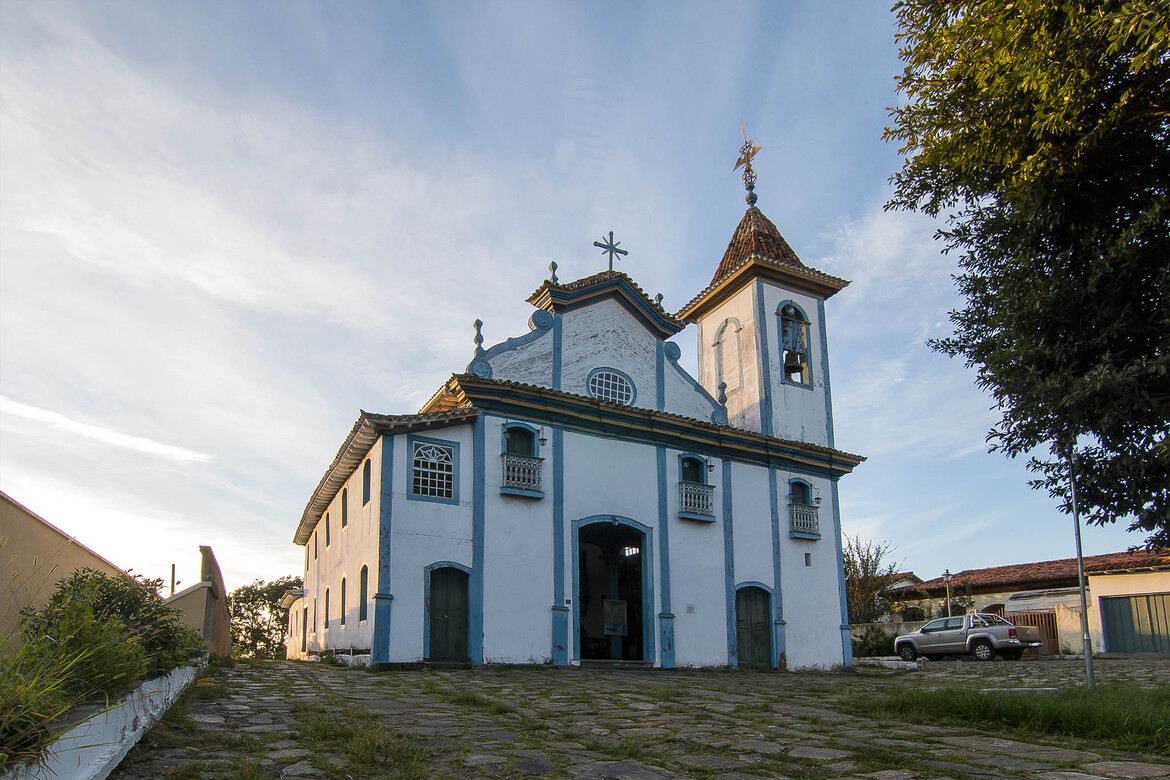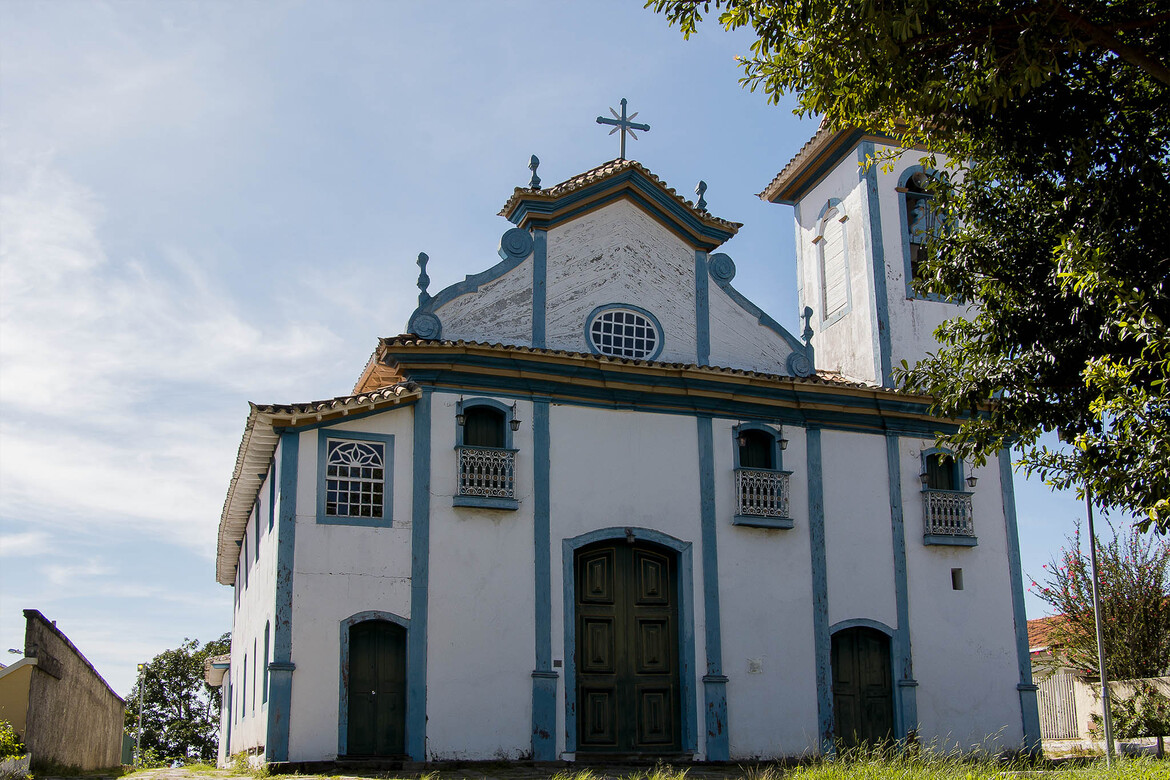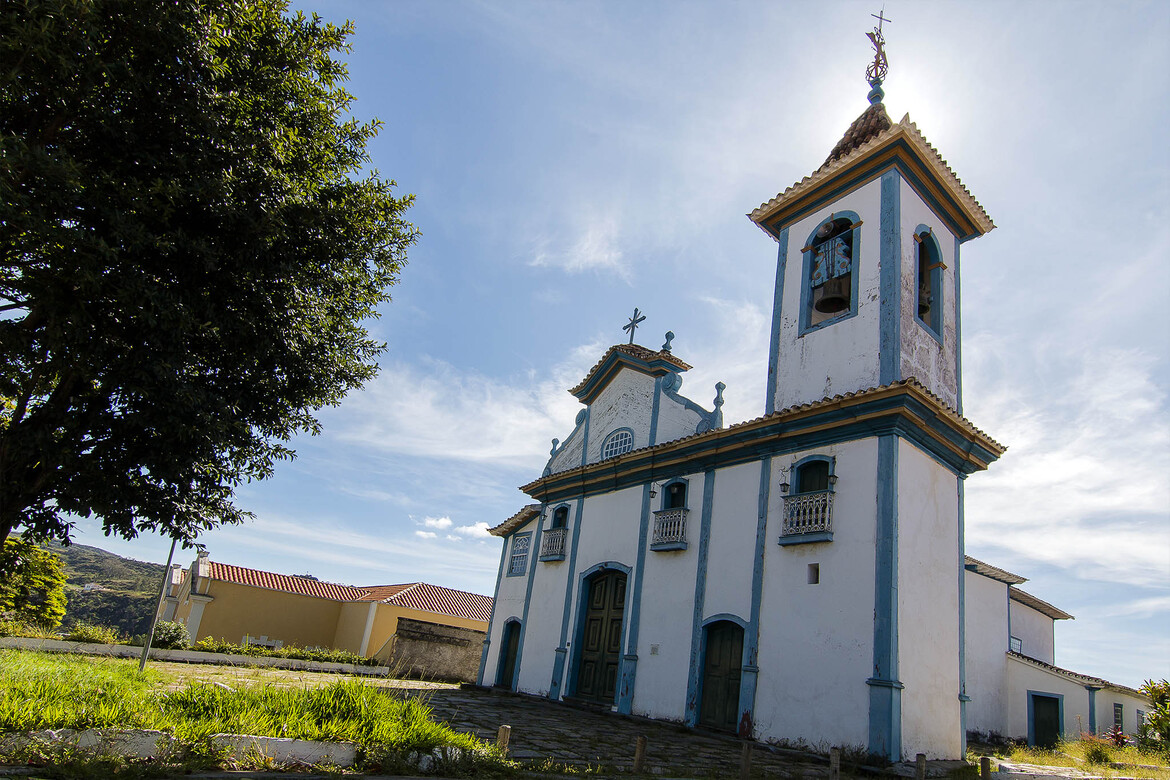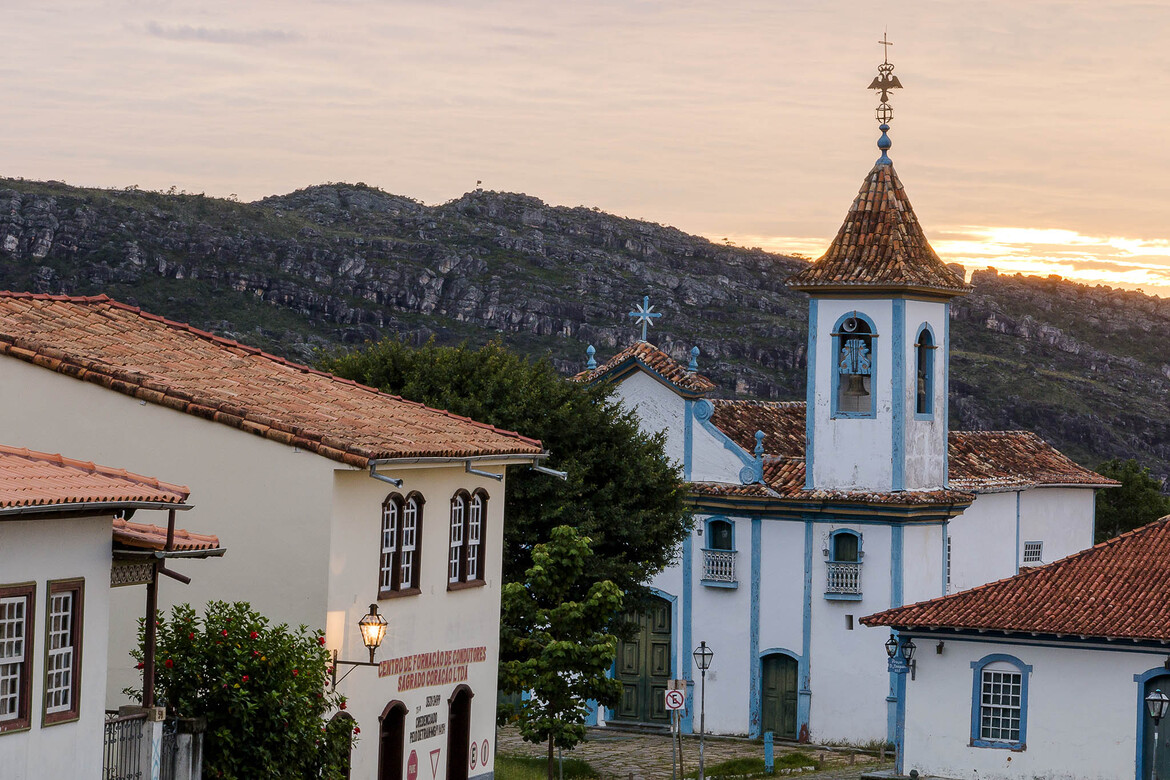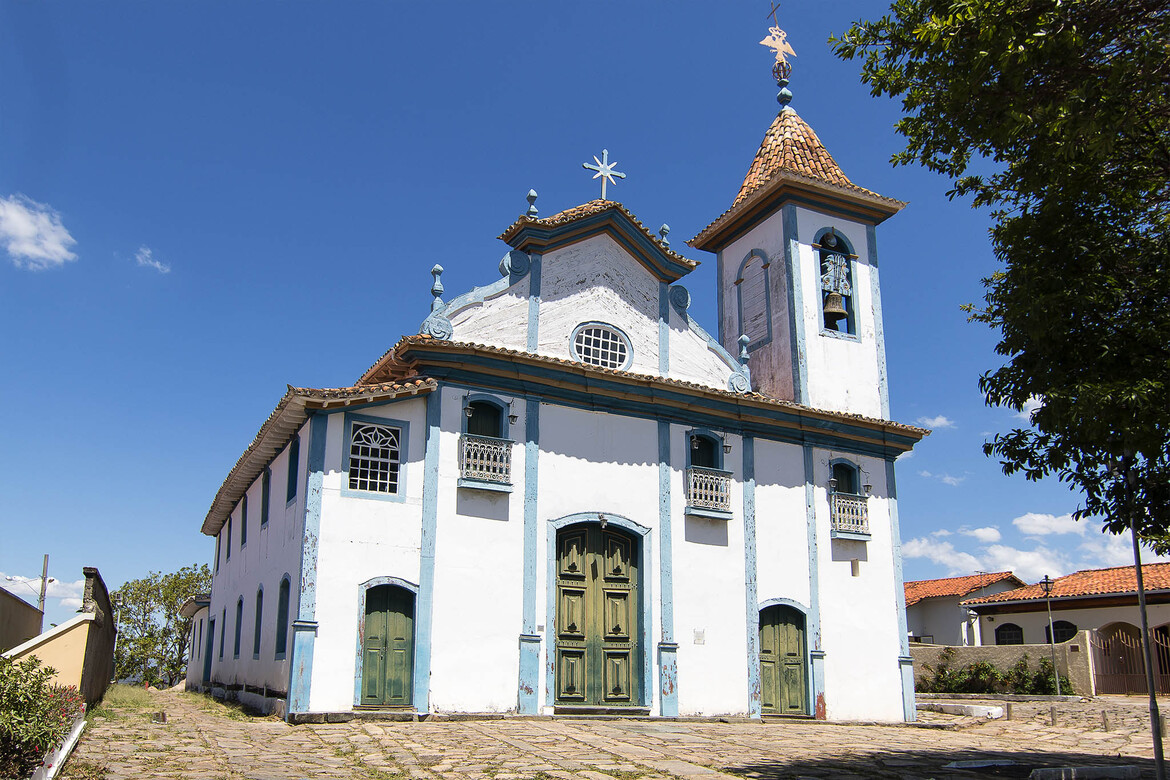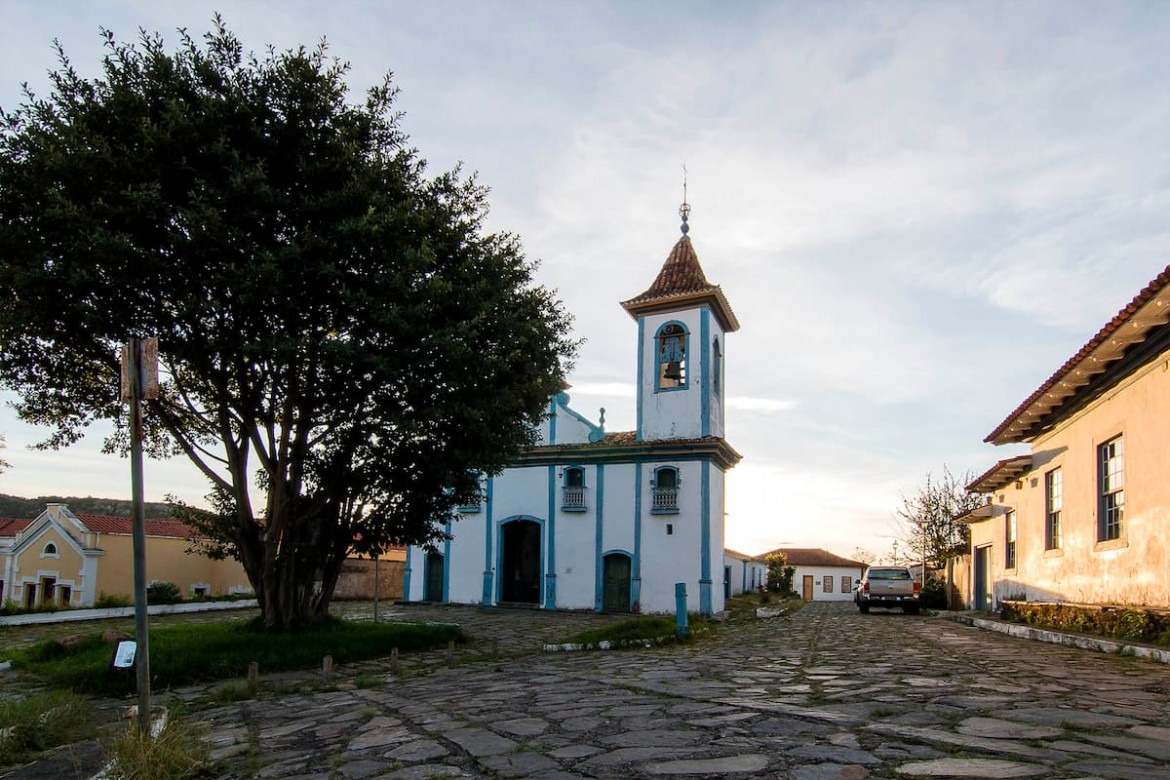Descrição: Período de Construção: 1728 - 1731
A Igreja de Nossa Senhora do Rosário foi erguida em local isolado do Arraial do Tijuco, em espaço amplo e no mesmo nível da rua. Sua planta segue os traços típicos da arquitetura luso-brasileira, conforme tradição do estilo maneirista português. A Igreja de Nossa Senhora do Rosário é a mais antiga de Diamantina.
Pertence à Irmandade de Nossa Senhora do Rosário dos Homens Pretos do Arraial do Tijuco, sendo construída entre 1728 e 1731, com os bens doados pelo Sargento-mor Manuel da Fonseca e Silva. Somente no final do século XVIII é que os irmãos do Rosário cuidaram de edificar “o corpo da Igreja”, firmando contrato com o mestre Manoel Gonçalves em 1772. Tem torre única do lado direito do altar, o que é relativamente raro em Minas Gerais.
Seus altares laterais, de tratamento rococó, em louvor à Nossa Senhora da Correia e Santa Luzia, datam do século XIX. A talha dourada do altar-mor e a fabulosa pintura do forro da capela-mor datam de 1779 e são atribuídas ao guarda-mor José Soares de Araújo, que atuou na região com significativas pinturas.
O forro da capela-mor tem a representação de Nossa Senhora do Rosário cercada por anjos e querubins; com cartelas emolduradas contendo inscrições em louvor à Nossa Senhora do Rosário.
Na sacristia, o teto é ornado por seis painéis de cenas retiradas dos Evangelhos. Chama a atenção o lendário Cruzeiro do Rosário, encrustado na árvore gameleira (fícus doliaria).
Hoje, este monumento, cuidadosamente registrado pelo fotógrafo diamantinense Chichico Alkmim (1886-1978) no início do século XX, nos permite perceber as mudanças sofridas pela igreja e pela árvore, ao longo do tempo.
Date of construction: 1728 - 1731
The Church of Nossa Senhora do Rosário was erected in an isolated location in Arraial do Tijuco, in a spacious area at street level. Its layout follows the typical features of Luso-Brazilian architecture, in accordance with the Portuguese Mannerist style. The Church of Nossa Senhora do Rosário is the oldest in Diamantina.
It belongs to the Brotherhood of Nossa Senhora do Rosário dos Homens Pretos do Arraial do Tijuco, and was built between 1728 and 1731 with donations from Sergeant-Major Manuel da Fonseca e Silva. But only in the late 18th century did the brotherhood build "the body of the Church", entering into a contract with master builder Manoel Gonçalves, in 1772. The Church has a single tower to the right of the altar, which is relatively rare in Minas Gerais.
Its side altars, treated in Rococo style, in honor of Our Lady of Correia and Saint Lucy, date back to the 19th century. The gilded carving of the main altar and the fabulous ceiling painting of the chancel date from 1779 and are attributed to Chief Guard José Soares de Araújo, who made important paintings elsewhere in the region.
The ceiling of the chancel features the representation of Our Lady of the Rosary surrounded by angels and cherubs; with framed cartouches containing inscriptions in praise of herself.
In the sacristy, the ceiling is adorned with six panels depicting scenes from the Gospels. The legendary Rosary Cross is noteworthy, encrusted in the gameleira tree (ficus doliaria).
This monument, carefully documented by the Diamantina-born photographer Chichico Alkmim (1886-1978) in the early 20th century, allows us to perceive the changes undergone by the church and the tree.
Localização: R. do Rosário, 183, Diamantina.
Distância: Localizada no Centro Histórico.
Taxas: R$ 10,00
Contatos: (38) 3531-1001 Escritório
Horários: Segunda a Domingo das 08:00 às 18:00
Mapa:

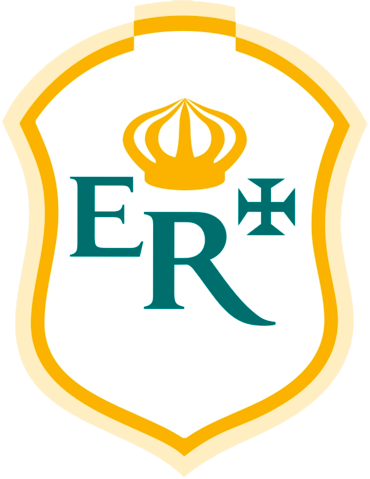 Estrada Real
Estrada Real

